Vasilena Gankovska in conversation with Boris Kostadinov
It is always a pleasure to talk to an artist whose works impress you not only because of their thematic and conceptual basis, but which visually and aesthetically reflect a very refined and sophisticated understanding of the form of contemporary painting, drawing, ceramics or public art.
It is of course even more pleasant when you are a friend of the artist and you know details of her personal world as well. Such is the case with Vasilena Gankovska, with whom we talk about many and different topics. Diversity is inevitable, because her art develops in different (sometimes even unexpected) directions, but she always manages to retain its essence, its clear meaning and the reason for its existence exactly in such a form.
B.K. There is a theory that after abstract expressionism, a revolution took place and the art work “has lost” its ultimate independence and could no longer exists without being placed in a specific architectural or natural context.
In your projects, there is a strong interest in architecture and urban / natural spaces (Urban Melodramas, Giardini 05, Domodedovskaya, Moscow Cinema Project, Seestadt, Rome Spatial Studies and others). Whether you work with the history of the Black Sea hotels or the cinemas in Moscow, whether you interpret the urban structure of Rome or the newly built neighborhoods in Vienna – the urban space and its visual metamorphoses is always decisive for your research / creativity.
How do you define this leading topic in your work and what are the reasons for it to become the basis of so many projects?
V.G. I have always been fascinated by architecture and the way urban structures function. I moved from Sofia to Vienna, which completely changed the way I perceive a city. Its clear forms, structures and different historical elements made me think more often about the kind of chaos I have left, how lively cities in transition are and what kind of contradictions and curiosities you can discover there. My main motivation to continue to walk through a city and take pictures is to find these contradictions, these weak points, or sometimes absurd things and „translate“ them for the viewer.
I started working on this topic during my first years as an art student at the Academy of Fine Arts Vienna, looking for a new visual language I could develop in order to translate images onto the canvas. Basically, this idea came from lectures I attended in media theory by Andreas Spiegl, where we discussed exactly this aspect of usage of language, visual, spoken or written. As I have used images from the internet or my own photographs, I decided that the process of using them for the paintings represents some kind of translation.
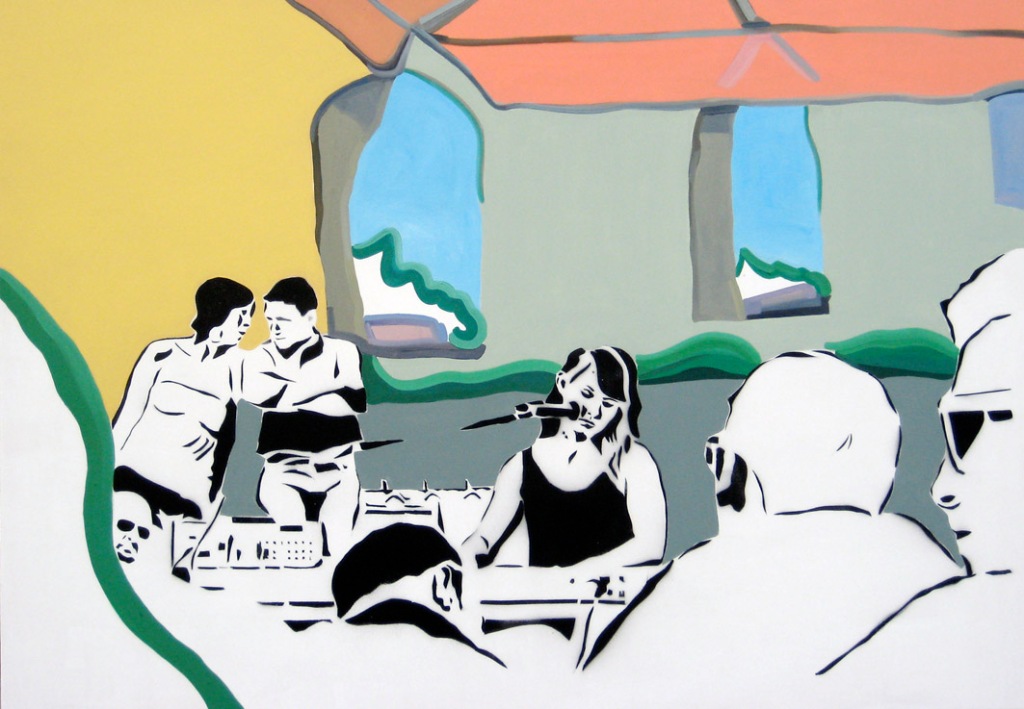
Rome Spatial Studies, 2012, oil and spray on canvas 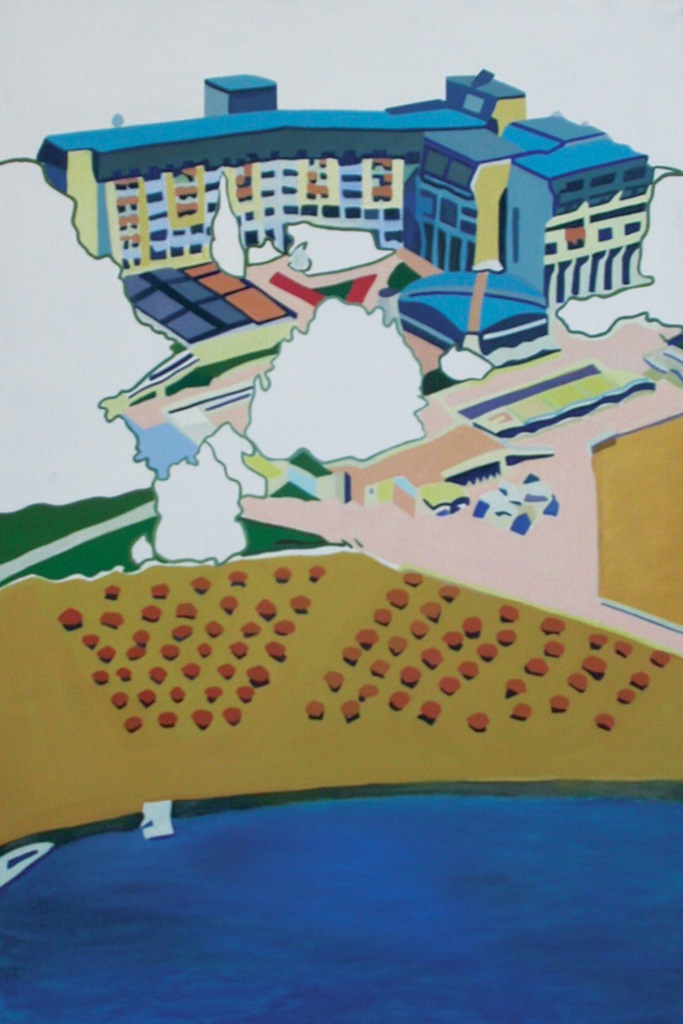
Hotel Imperial, 2002, oil on canvas 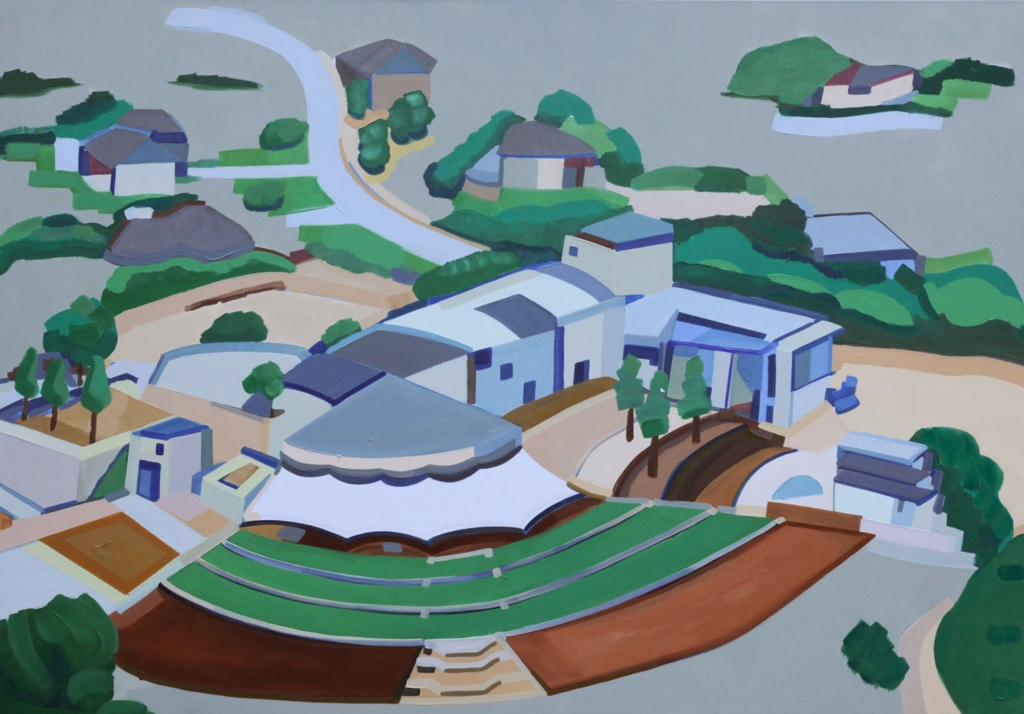
mdell, 2010, oil on canvas 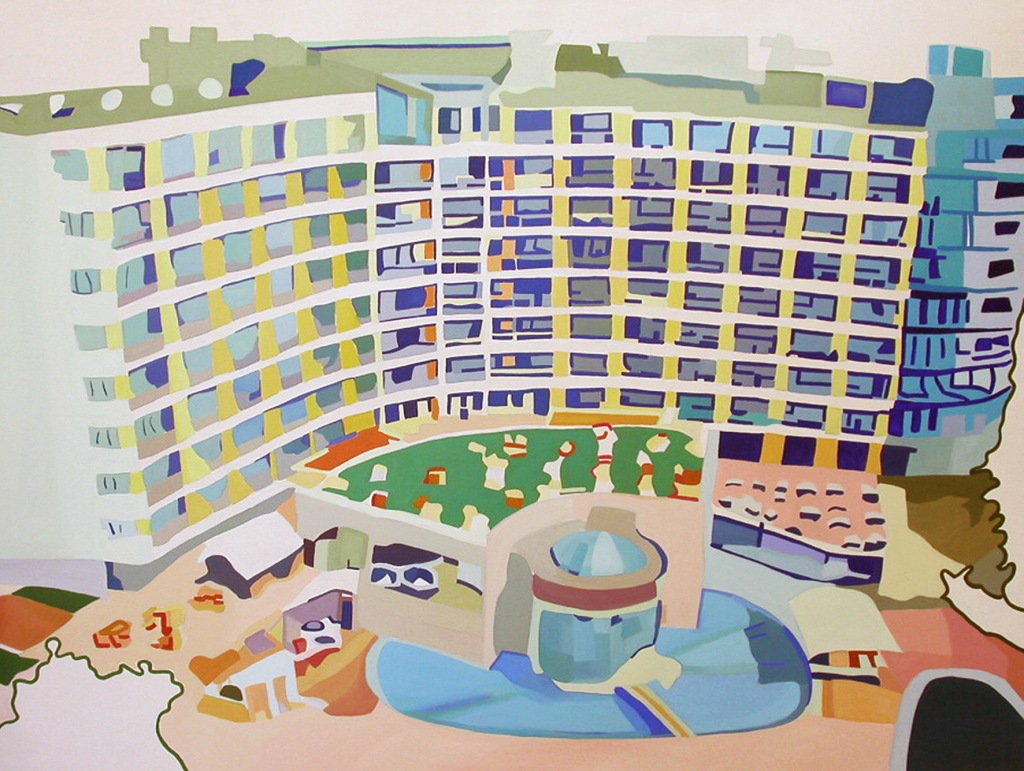
Hotel XXX, 2003, oil on canvas
B.K. Let’s move from urban to holiday spaces. You have a remarkable cycle depicting hotels.
How did such a topic related to the nature of tourism catch your attention?
V.G. I found some images of at the time newly refurbished, emblematic hotels at the Bulgarian seaside, which I had seen as a child. What astonished me most was the way these hotels got their new look according to the mass tourism standards of western companies. At the beginning of the 2000s, Bulgaria was already popular as a holidays destination, but mostly for budget tourists from Germany. At the same time, many of the formerly state-owned hotels have been privatized and some very wealthy Bulgarians bought them. It was clear back then that the hotel business was in the hands of people who were close to different government circles; also, many of these people died under strange circumstances. So, painting these hotels was also a bit of an act of politicizing or emphasizing the fact that most of the business relations back then were very obscure. From the perspective of almost 20 years ago, these hotels act as a symbol of the transition period to turbo capitalism. They are colorful, abstract, but defined, they all have swimming pools and the shabby chaise-longs, which one can see from Mallorca to Vladivostok (not sure about the latter). In my artworks, some parts are very clear and some not, so that the people who see the paintings spend a long time in front of them to decipher the images.
B.K. The time of socialism created many different slogans. Some of them promoted hard and enthusiastic work, followed by a well-deserved working-class vacation.
In 2003, in parallel with your cycle of hotels (which of course is related to leisure), you created a cycle representing labor in various factories. You know the visual clichés of socialist propaganda very well that were widespread in any form before 1989 in Eastern Europe. What made you create this cycle? Is this some kind of nostalgia for childhood? Or do you reflect any newer reality with these paintings?
V.G. In 2002 when I went home to my parents, I found some old slides my mother made while working as a photographer. She documented lots of factories in my home town; the images were used mostly for advertising or propaganda. I was amazed by the way the people staged their work for the pictures and represented a whole era by doing so. I decided to make a painting series dedicated to all these workers. Also, what was interesting in these images is the gender division in labor. There is only one painting where you can see men and women together.
Shortly after I made the first painting there was an exhibition by Marcin Macejowski in Galerie Meyer Kainer in Vienna. He also had a series of paintings with different workers.
My colleagues and friends thought that it was some kind of „Eastern European thing“, dealing with this topic. I think that it is partly true, since these images were part of our life and the praise of labourers was a very important ideological element. These are symbolic figures of production modes that do not really exist anymore.

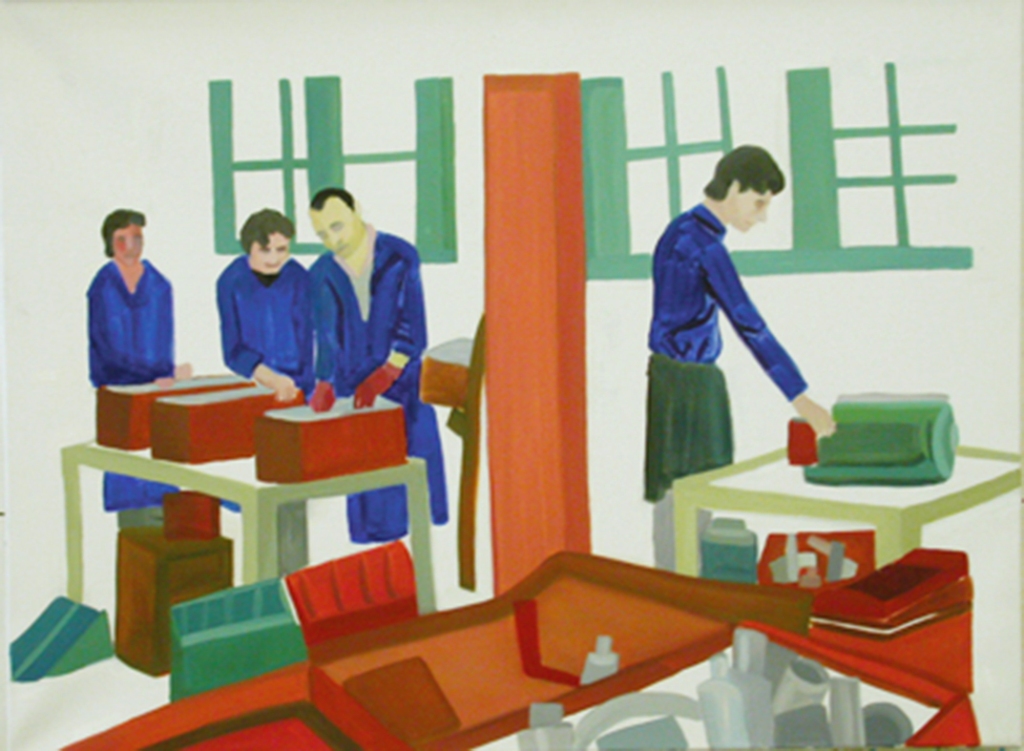


Work series, 2002/03, oil on canvas
B.K. Now let’s move away a bit of the specific objects / subjects of your art and let’s talk about something very decisive and important. I have always been impressed by how you develop your personal approach to painting. Each of your new works is related to the previous ones and is clearly recognizable, but at the same time there are always some new visual elements, color solutions or new techniques.
Please tell me more about how you define your development in the field of painting? What are your inspirations, even artists or phenomena in the art world that have influenced you and that you have analyzed over the years? What concerns you at the moment when you think about the specifics of contemporary painting?
V.G. As I mentioned before, I understand the process of painting as visual translation. I developed certain visual language, which derives partly from architectural drawings, partly from influences of the Soviet Avant-Garde or 1960s Pop art and especially artists like David Hockney and later on Karen Kilimnik, Elizabeth Peyton, the Polish art group Ladnie (Pretty) (Wilhelm Sasnal, Marcin Maciejowski, Rafal Bujnowski), Johanna Kandl and Paulina Olowska, to mention a few. During my studies between 2001 and 2006 in Vienna, the most influential painters were the Leipziger Group (Neo Rauch, David Schnell, Matthias Weischer, etc. I certainly looked at them, but I simply could not relate to the masculinity their topics and technique transmitted. I am still more fascinated by rather simple but very precise and well-defined shapes and brush strokes (Maciejowski, Sasnal), or narratives, which tackle topics regarding feminism/femininity/portraiture (Olowska, Amy Sherald). In the last few years, I have worked a lot on abstract works, relating more to Soviet Constructivism or the abstraction of Bridget Riley, for example, but also connected to some urban artists (Maya Hayuk, Alexei Luka). In terms of colors, connected to emotions and actions, one of the works which had an enormous impact on me is the video „Ever is After All“ by Pipilotti Rist. It was one of the first contemporary art works I could see „live“ while studying in Sofia, Bulgaria. The most important part of the work alongside the colors is the sound, these poetic parts interrupted by the noise of broken glass. I recently heard an interview with the artist where she said that this work came out in a moment of big frustration and anger. Still, it transformed these feelings into something extremely beautiful. I think that in these days we all face lots of moments of despair, frustration, fear, so the question is how to process this energy into something productive, positive.

B.K. There is a moment when the architecture in your paintings “comes out” of the surface and materializes as a three-dimensional object. Most often these are details and ornaments to which you pay special attention.
Can we consider such a solution as a study of the two-dimensional vs the three-dimensional? Or can we say that this inspiration comes from the ceramic works that you created earlier in your career?
V.G. It certainly comes from my ceramic works, but it also has archeological features. These elements you are talking about derive from art in the public space, which were very popular in Bulgaria in the 1970s and 1980s. They were based on modules or freely created reliefs or sculptures, made from ceramics. In a way they predetermined the way you perceive the architecture, so for me they are part of the whole image. The archeological aspect comes from the fact that unfortunately many of these works got damaged and were never refurbished or even removed.
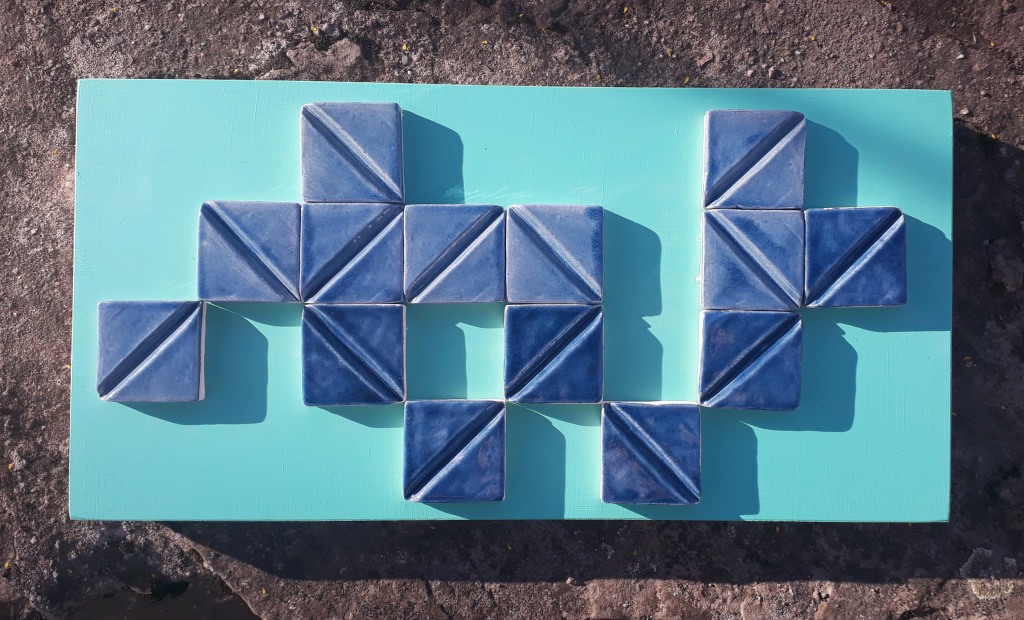
B.K. With your stencils and performances in the urban places (your research trips to cities like Rome or Moscow, your collaborations with PERFEKT WORLD, the Seestadt study in Vienna), you don’t promote any manifestos about how important art must in the city, but at the same time you create a specific activism, which in many cases is more fruitful and useful for our awareness – not just how important it is for art to be present passively in public space, but in general – how art could be an active element in the public discourse.
How would you define your conceptual position as an artist working in public areas? In our time, in what way should we perceive art for society?
V.G. I started using stencils when I first went to Paris in 2008; I spent a few months there on a residency and could see a lot of works by the local stencil artists. I was impressed by the simplicity of the image and the big impact of the message they transmit. Since then, I have used stencils in my works, especially when I have projects in the urban space. These works are mostly site-specific and created by commissions. My role in these situations was to visually highlight a topic, or a problem, or to erase racist or sexist images and slogans. As far as I was able to talk to the locals, they were rather happy with the work I did and that someone could show them other possibilities to perceive art or just to get rid of things which have been disturbing them, but they did not know how to solve the issue. In this way I think that art in public spaces shows different options, different perspectives, offers another experience or points out at big problems or issues, people have to deal with, like in the project „Urban Interventions“ in Plovdiv 2019. It was a project that dealt with the accessibility and safety of the urban space, especially for women, about the often hostile environment in big cities, such as Plovdiv. I chose to work on the subject of sexist and racist slogans, spread around the two districts we explored. My intervention was to erase or replace them by adding completely different messages, so instead of the hateful messages sprayed on the wall of a local kindergarten, I wrote „Playground“ alongside some very colorful spots. By doing so I not only cleaned up this visually toxic environment, but made a mural that related more to the building and its purpose.

B.K. Painting is of course the main focus of your artistic career, but your drawings (recently, you are also creating digital drawings), ceramics, texts and interventions are also of great interest to your audience. In what areas do you intend to work more deeply in the future? Do you plan to develop more or work even in other directions with your experiments with ceramics or street art for example?
V.G. I recently started working with digital tools and software to experiment with different ways of creating digital images, which I can easily use for prints, posters or illustrations. This is a way for me to enable more accessible production modes for my images, which then could be produced in any place in the world. I have always thought about how to make my work physically more available to people, in small editions or just digitally, so that the production costs are reduced and a more ecological production would become possible. Working with painting and stencils still requires lots of chemicals, so I am a bit concerned about the impact my art practice has in terms of the environment.
On the other hand, there is nothing more exciting than going to a site with some friends I collaborate with from time to time and making a mural or just few sketches on a wall.
I also rediscovered teaching, mostly ceramics, the materiality of this medium is very complex and at the same time very simple, natural. It is not so much about the colors, but about texture, shape and dimension. It can be highly unpredictable and very flexible.
But if I want to work on bigger narratives, like in the project I have been doing in Seestadt: painting, combined with drawings and texts or the so-called visual notes, can transmit the messages, hidden behind such huge urban development projects.

B.K. Besides your independent career, you are engaged with social and political activities – more specifically the activities of the IG Bildende Kunst, the Austrian Association of Visual Arts. Tell me please, what is your motivation to support or debate the position of the contemporary artist in social and political terms?
V.G. As a migrant here in Austria, I have been confronted with a lot of paperwork and obstacles. I learned very quickly that for every problem there is an advocacy group or a representative body which helps out people in difficult situations. I have worked for the Austrian Student Union for many years, initiated debates on educational politics, coordinated the project funding for student art projects and took care of study programs, activist projects and debates. Afterwards I was invited to join the executive board of IG Bildende Kunst and to work on projects dealing with the working and living conditions of the visual artists. For me being part of this organization helps me to analyze and better understand the system we live in, to look for the obstacles and to improve the situation of my colleagues and myself. I like working on guidelines for artists fees or participating in public debates, to write articles or curate projects. This helps me to experience the art world from different perspectives, something which I think is very important as a contemporary artist, on the one hand to pursue a classical artist career with gallery representation and on the other hand to be part of the independent art scene.
Vienna/Berlin, March 2021
